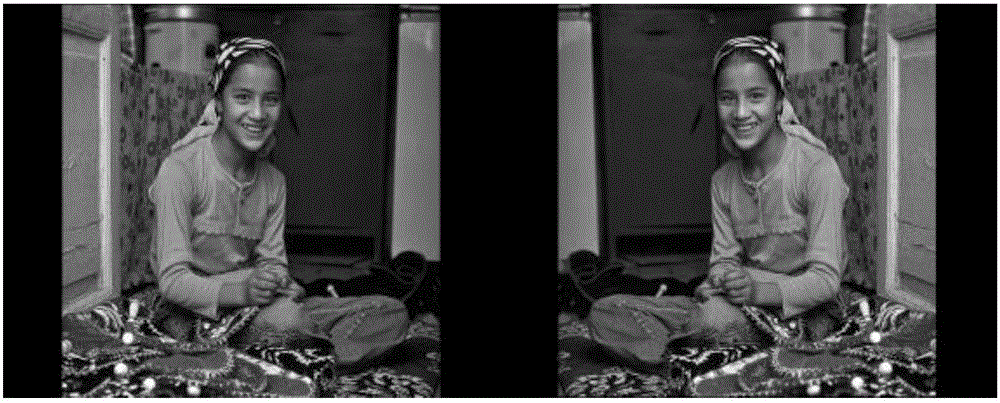Three-dimensional image quality objective evaluation method based on three-dimensional visual saliency
A technology for objective quality evaluation and stereoscopic images, applied in the field of stereoscopic images, it can solve the problems that the objective evaluation value cannot effectively reflect the subjective evaluation results, and the influence of the human eye is not considered.
- Summary
- Abstract
- Description
- Claims
- Application Information
AI Technical Summary
Problems solved by technology
Method used
Image
Examples
Embodiment 1
[0043] An objective evaluation method of stereoscopic image quality based on stereoscopic saliency, see Figure 11 , the stereoscopic image quality objective evaluation method comprises the following steps:
[0044] 101: By simulating central offset and fovea characteristics, optimize the stereoscopic saliency map, and extract the optimized stereoscopic saliency map;
[0045] 102: Obtain a stereoscopic image comprehensive quality map according to the quality map of the distorted stereoscopic image and the quality map of the absolute difference image;
[0046] 103: Perform weighted summation on the comprehensive quality map of the stereo image through the stereo vision saliency map to obtain an objective evaluation value of the quality of the distorted stereo image.
[0047] Wherein, before step 101, the stereoscopic image quality objective evaluation method further includes: obtaining a stereoscopic saliency map of the distorted stereoscopic image by simulating visual saliency,...
Embodiment 2
[0063] 201: Obtain a stereoscopic saliency map of a distorted stereo image by simulating visual saliency;
[0064] According to the literature [9], this method extracts the brightness contrast feature, chroma contrast feature and texture contrast feature of the right view of the distorted stereo image.
[0065] (1) Convert the right view of the distorted stereoscopic image from RGB to YCbCr color space, divide it into non-overlapping image blocks, and carry out discrete cosine transform to the image blocks;
[0066] Convert the right view of the distorted stereo image from the RGB color space to the YCbCr color space, the Y channel represents brightness information, and the Cb and Cr channels represent chrominance information; the right view of the distorted stereo image is divided into 8*8 non-overlapping image blocks, and the image blocks are Carry out discrete cosine (DCT) transform; Use the direct current (DC) coefficient L=Y of Y channel DC Represents the brightness feat...
Embodiment 3
[0125] The method is described in detail below in conjunction with the technical solution: the present invention specifically includes three parts: extracting a stereoscopic saliency map, extracting a stereoscopic image comprehensive quality map and merging the two, and the specific steps are as follows:
[0126] 301: Initially extract a stereoscopic saliency map;
[0127] (1) Convert the right view of the distorted stereoscopic image from the RGB color space to the YCbCr (4:2:0) color space according to formula (1), the Y channel represents the brightness information, and the Cb and Cr channels represent the chroma information; the right view is divided into 8*8 non-overlapping image blocks, carry out discrete cosine transform to image blocks according to formula (17);
[0128] Y=0.299R+0.578G+0.114B
[0129] Cr=0.5R-0.4178G-0.0813B+128
[0130] Cb=-0.1687R-0.3313G+0.5B+128
[0131] F ( m , n...
PUM
 Login to View More
Login to View More Abstract
Description
Claims
Application Information
 Login to View More
Login to View More - Generate Ideas
- Intellectual Property
- Life Sciences
- Materials
- Tech Scout
- Unparalleled Data Quality
- Higher Quality Content
- 60% Fewer Hallucinations
Browse by: Latest US Patents, China's latest patents, Technical Efficacy Thesaurus, Application Domain, Technology Topic, Popular Technical Reports.
© 2025 PatSnap. All rights reserved.Legal|Privacy policy|Modern Slavery Act Transparency Statement|Sitemap|About US| Contact US: help@patsnap.com



